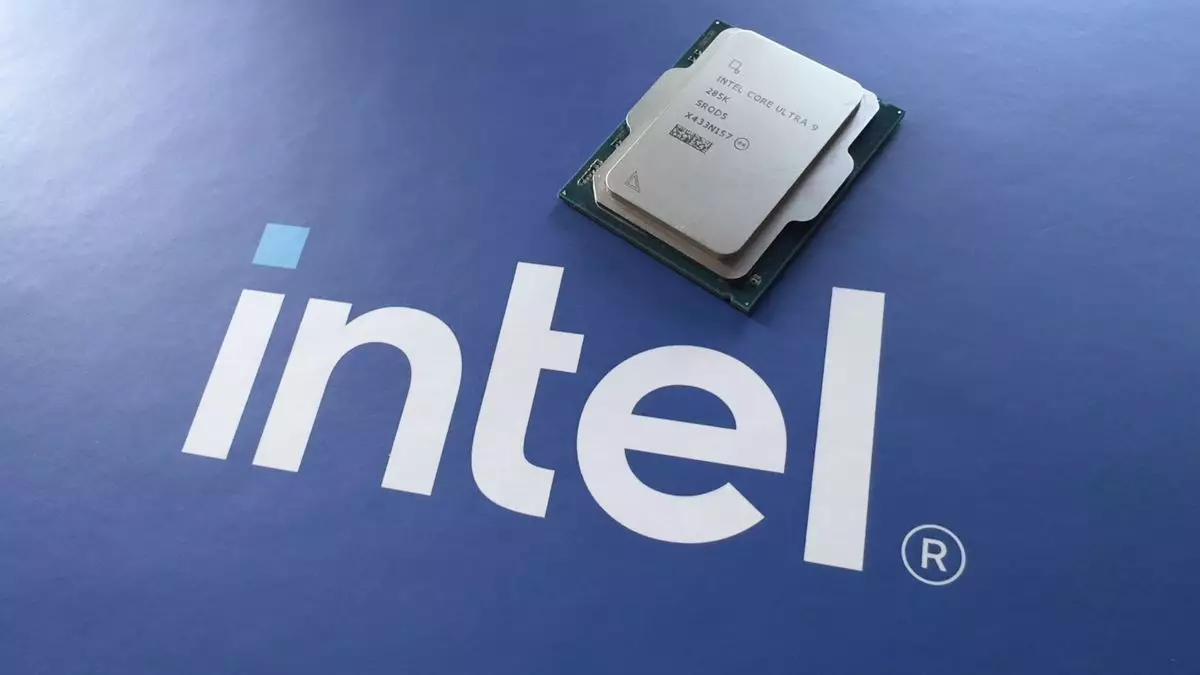The launch of Intel’s Arrow Lake processors has ignited considerable discussion within the tech community, particularly after the company’s admission of unmet performance expectations. Recently, Robert Hallock, Intel’s Vice President and general manager of Client AI and Technical Marketing, shed light on the situation during an interview. This situation raises critical questions regarding Intel’s approach to performance optimization, especially in the realm of gaming. Let’s delve into the main issues associated with the Arrow Lake Core Ultra 200S processor, explore the technical intricacies highlighted by Intel, and analyze the potential ramifications for gamers and enthusiasts.
Intel’s Arrow Lake launch was overshadowed by a troubling revelation: a significant gap between the company’s internal performance benchmarks and those relayed by reviewers. Hallock candidly acknowledged, “The performance we saw in review… was not what we expected and not what we intended.” The implications of this statement are profound. The inconsistency between anticipated results and actual performance could not only impact consumer trust but also raise questions about Intel’s quality control and beta-testing methodologies.
As reviewers and testers provide crucial data to guide consumer decisions, any disconnect can be detrimental. For gamers, particularly, the Arrow Lake’s initial performance metrics signal potential pitfalls for future gaming experiences. The disparity stems from a multitude of issues spanning from the operating system to the BIOS, as noted by Hallock, indicating a complex web of challenges that could take time to resolve.
In efforts to ameliorate the performance, some enthusiasts have turned to overclocking and using high-speed RAM to squeeze out better results. My tests showed minimal gains—an average performance boost of around 2% for frame rates and often significantly underwhelming results in terms of stability. Specifically, while some games like Cyberpunk 2077 exhibited slight improvements, the overall returns were meager.
The scenario reflects not just an architectural challenge but also shines a light on the limitations of hybrid designs in contemporary gaming contexts. Despite increased clock speeds and well-optimized RAM configurations, it appears that the core structure of the Arrow Lake may not lend itself well to the most demanding of gaming applications.
Intel’s Application Optimization (APO) tool aims to enhance performance by optimizing thread management across its hybrid architecture. However, my own experiences with APO yielded inconsistent results. While some games benefitted from its integration, notable titles like Cyberpunk 2077 seemed indifferent to the tool completely.
The implications here are significant. If the APO fails to dynamically enhance performance across a broader spectrum of popular gaming titles, this could further cement Intel’s Arrow Lake as a less appealing option for gamers. As gaming moves towards increasingly complex and resource-intensive environments, it is critical for optimization tools to deliver universal enhancements rather than isolated improvements.
When comparing the Arrow Lake processor to its Raptor Lake predecessor and AMD’s forthcoming Zen 5 chips, numerous challenges become apparent. Arrow Lake’s architecture—marked by a chiplet design reminiscent of AMD’s earlier Ryzen processors—exhibits performance weaknesses particularly in latency. Whereas AMD has evolved to bolster its Ryzen series with advanced memory controllers and impressive 3D V-Cache technology, Intel seems to lag behind in optimizing foundational architecture for their latest release.
Supporting evidence indicates that while Arrow Lake processors offer enhanced power efficiency and solid performance in content creation tasks, they have not achieved parity with competing gaming-centric processors. As gaming technologies evolve, the demand for low-latency, high-speed performance is paramount. Intel must address these shortcomings if it hopes to remain a competitive presence in the gaming CPU space.
While Arrow Lake represents a notable advancement in many areas, Intel is confronted with considerable challenges to ensure it performs optimally in the gaming landscape. Moving forward, the company must prioritize software updates and hardware optimizations that specifically tackle the performance discrepancies noted by reviewers and testers.
Moreover, Intel must take proactive measures to restore consumer confidence, particularly amid fierce competition from AMD and the high expectations of gamers worldwide. As the gaming arena rapidly advances, the need for powerful and versatile processors becomes more pressing. Intel’s commitment to improvement will determine its long-term success amid a landscape that is becoming increasingly demanding and competitive.


Leave a Reply